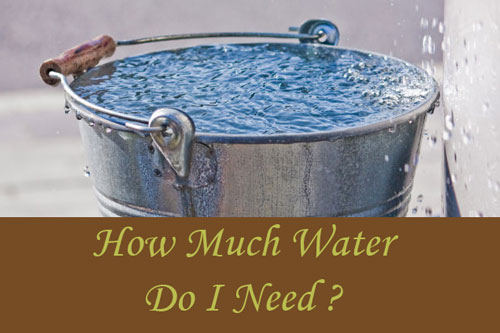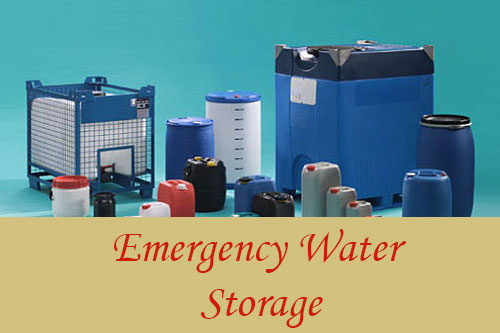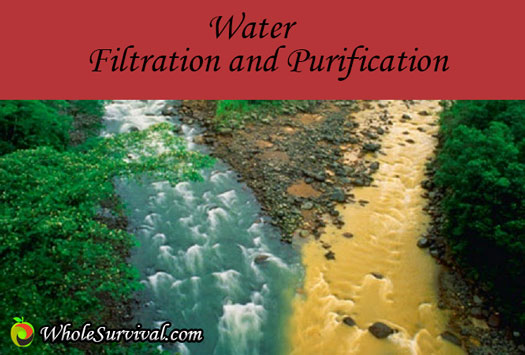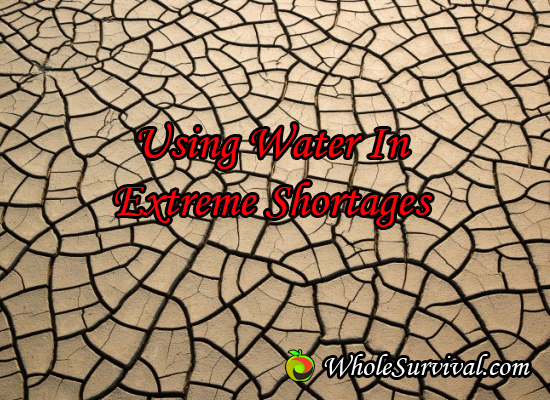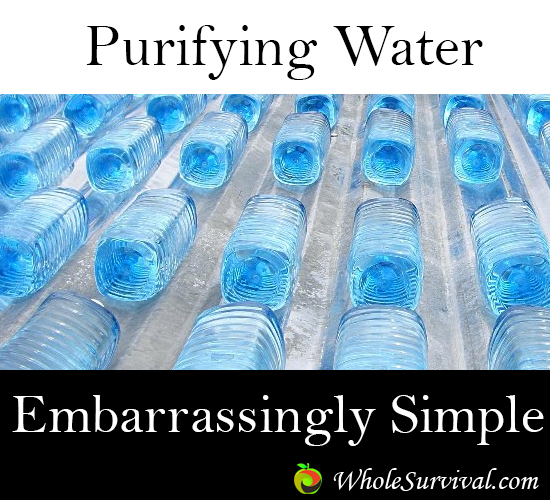Water Storage – How Much Will You Need?
Every individual situation is different and so a one size fits all water plan is not going to work. So, in this article I will go through different ideas to help get you thinking about your water storage needs.
We’ll start by looking at the estimated amount of water per day that is required per person. In doing my initial research, I’ve seen a minimum of one gallon per day per person, to up to 3 gallons per day per person being talked about on various prepper websites. Well if you are storing water for more than a few days worth, that can amount to a huge difference in the long term. So I went looking for the sources of these numbers.
What I found was that the one gallon per day is a number taken from the U.S. Army Corps of Engineers (USACE) an emergency distribution number for basic survival purposes to keep people alive. It in no way represents a realistic long term survival number. So I kept looking to find some more information.
Research On Water Requirements
– WHO recommends 20 liters per day for basic water needs and 50 liters (13 gallons) per day (Table S1) if you include proper hygiene function and clothes washing. It also notes that about 1 gallon per day would indicate a very high level of health concern.
– Another U.S. Army Corps of Engineers tactical research document concerning the amounts of water that a soldier requires per day also calculates the number at almost 13 gallons. This includes drinking water as well as all other functions needed at Forward Operating Bases.
– The Mayo Clinic states that the average adult needs to consume a minimum of almost 3 liters of water or almost one gallon per day to stay hydrated in a normal situation. Exercise, stressful conditions, illness, and high heat or humidity will increase the amount needed.
So, now that we have some actual research to base ourselves on and not pulling numbers from our butt or rehashing someone else’s internet blog post, let’s continue shall we.
What The Numbers Tell Us
We can see that the one gallon per day per person figure meets the basic human water drinking needs. It will keep you alive, but you won’t have any water to wash yourself, your dishes, or your clothes. You won’t have any water to boil that pasta or rice or soak those beans that you also have stored. You won’t have water to give to your pets, your animals, or your plants. You won’t have any water to clean up that mess you spilled on the floor etc . . .
On the other end of the spectrum was the more robust figure of 13 gallons per day given by both the WHO and the USACE documents. This seems to include all the daily functions that one would need to have adequate hygiene and to be comfortable with in a long term situation. Thirteen gallons of water however is a large amount. Multiply this by the people in your household for each day and of course, storing this much water would take a huge amount of space. At that point you might be better off with a water filtration or purification method to meet your daily needs.
That leaves us somewhere in the middle between one gallon per day for dire emergencies and 13 gallons per day for full functionality.
How Long Can You Go On That Amount
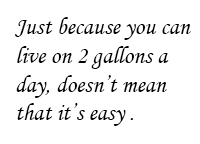
There are many adults who can get by on only two gallons per day for all their needs. People on long camping trips and sailboat voyages for example do this frequently. However, by their own admission, it is pretty spartan and they need to regulate their water use very carefully by taking short showers perhaps once a week, and re-using their grey water for toilets.
However, using these low amounts for a long period of time does take experience. Discovering ‘tricks’ or methods to saving water is extremely important.
As well, just because you can live on the minimal two gallons a day, doesn’t mean that it is not contributing to your stress. Sure. physically you are fine, but mentally it can become taxing. Over a long period of time, having to think about every drop of water you are using will probably take it’s toll. You need some breathing room to reduce the stress, because in a survival situation there will be many stressors to deal with.
How Can I Know Exactly How Much Water I Will Need?
There is a large range of quantity between two gallons and twenty, so how will you know how much? Well, to get an even more accurate number, perhaps you could actually measure your own water usage to see how much you use on the average day. It’s not that difficult really. I’m not talking about looking at your water meter bill either.
Simulate an emergency situation and then measure everything coming out of the tap by running water into plastic or glass containers that you know the volume of. Fill up a few one gallon jugs, use that up during the course of the day and refill them when they are empty. Depending on the situation you are trying to get an estimate for, perform the tasks in the same manner that you would have to in that situation. For example, wash the dishes by hand instead of using the dishwasher, don’t fill the bath up as much as usual to wash yourself that night, etc.
You can do this for a few days to get an average amount of water usage for your household. Once you are comfortable that you have an appropriate number for the amount of water that you daily, you can start to plan properly.
What Water Emergency Are You Planning For?
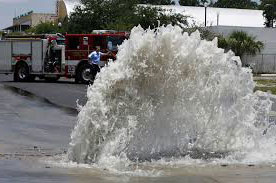
The last step in this process is to think about the emergencies that you are willing to actually plan for. So for example, the last time the municipal water supply was shut off to my house (due to a water main break), it lasted about two days. Let’s say that’s the minimum amount of time that I want to be ready for if it happens again. It actually happens fairly often, WaterMainBreakClock.com says that an average of 850 breaks happen each day in North America.
In this situation, I know that it will be a temporary lack of water and that the water main will be back in operation fairly soon, within a few days at most. At that point I will need drinking water and some other amount for washing a few dishes. I would be able to skip the bathing and washing of the clothing until everything is back to normal. So maybe two gallons per person would be adequate. That means I would need two gallons per two days, per four people in my house to make a total of 16 gallons. This is not so bad and storage can easily be accomplished by having that amount in store bought one gallon containers. They would also be easily rotated every so often.
How Much Water Will You Need To Store?
If I take a higher figure of five gallons per day however, multiply that by the four people in the house, times two days, it gets me to 40 gallons. Now that’s starting to become a lot of water to have to keep sitting around, it’s actually almost completely filling one of those large barrels. Am I willing to have a 55 gallon drum full of water sitting in my house somewhere for a two day emergency water supply?
In reality, the hot water heater (and piping throughout the house) can store about this amount of water if it is really needed to be accessed. Plus, there are other ways to store water in your house without dealing with the additional trouble of cycling the water. For example, you can hook up multiple hot water tanks in series to so the water that will always be fresh, but only heat the last tank up.
But, as you can see even the amount of water you need to store for a basic short term water outage can get quite large fairly quickly. If you are prepping for anything longer than a couple of days or have more than a handful of people in the house, then it will be necessary to get a water purification system to be able to have long term water safety. Of course that means you would need to have continued access to a water source, which is the subject of another article.
What Are You Waiting For?
By this point, I hope I have given you enough information so that you are able to determine some of your water preparedness needs. It’s actually quite scary to think about how much water we really go through on a daily basis. A huge point of being a prepper is to not have to rely on someone else for your survival needs and water is the most important resource that you need everyday. Don’t wait until the tap is dry to think about your water preparedness.

